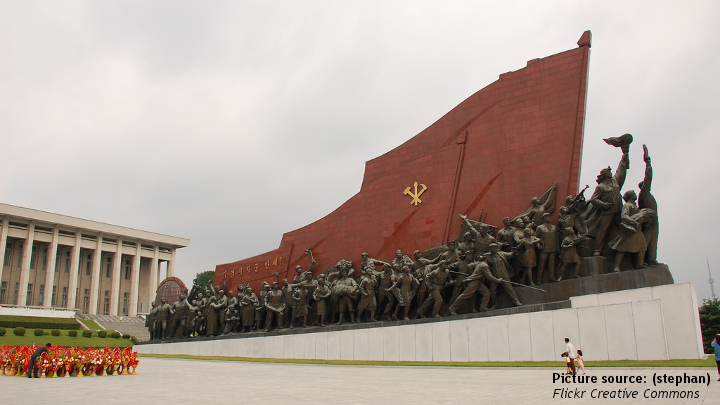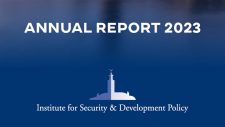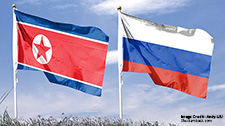North Korea’s Nuclear Ambitions Have Turned Into a Status-Quo Show

Sangsoo Lee
With Kim Jong-un’s reported reappearance after speculation about his health, a top-down diplomacy, driven by President Donald Trump and Kim, still remains the main channel for future nuclear talks.
Despite this, there is still no sign of both sides resuming negotiations anytime soon. Although the United States is still keeping the door open for dialogue with North Korea, it is not interested in easing the sanctions. Washington argues that North Korea should take more serious actions for denuclearization first. But there is also a lack of trust in Pyongyang on the willingness of the United States about corresponding measures to its action for denuclearization.
Amid the handling of the pandemic crisis and China’s challenge to U.S. power, North Korea is not a priority for the United States. Trump has already told top foreign policy advisers that he does not want another summit with Kim Jong-un before the presidential election in November. Meanwhile, Kim Jong-un is also not interested in meeting with Trump, who could leave the White House in early 2021, unless there is a prospect of sanctions relief. As such, dramatic moves are not likely to appear in U.S.-DPRK relations ahead of the November presidential election.
Due to the failure of the Hanoi Summit, Pyongyang had to recalibrate its strategy to mitigate the impact of sanctions, not through negotiations, but by focusing on building its self-reliant economy, in addition to creatively circumventing the sanctions regime.
After nearly three weeks out of the public eye, Kim Jong-un’s first reappearance in public was at the opening ceremony of a fertilizer factory—aimed at showcasing self-reliant economy and domestic food security in spite of tough sanctions.
However, this drive appears more as its propaganda slogan, aimed at shoring up internal unity in the face of U.S.-led sanctions, but as a major breakthrough, North Korea has sought closed relations with China, who provides foreign currency.
Nevertheless, North Korea’s new survival strategy has been hindered by the outbreak of the coronavirus, even if Pyongyang has officially not reported any cases. Its strict anti-coronavirus measures, including the closure of the border with China, have dramatically reduced its income from trade and tourism. As such, the combined impact of sanctions and the coronavirus has the potential to trigger significant challenges for the domestic economy in the medium- to long-term.
Considering that, in the past, North Korea has used a brinkmanship strategy to overcome its domestic difficulties, it likely wants to create tensions to secure leverage over the United States in future negotiations. However, Pyongyang also knows that going too far would likely see the United States increase pressure, such as additional sanctions and military measures, as well as China’s reaction, possibly reducing its aid and support.
With this in mind, North Korea will perhaps demonstrate its more advanced missile technologies, which can be used as part of a long-range delivery system, rather than an actual nuclear or ICBM test.
Most of the weapons North Korea has tested recently were ballistic missiles or artillery shells with solid-fuel. Furthermore, South Korean intelligence sources have found evidence of submarine-launched ballistic missiles (SLBM) activities at a North Korean shipyard in Sinpo. Therefore, the regime is likely working to expand its solid-fuel missile and SLBM capabilities to achieve an intermediate-range capability, and potentially even intercontinental range.
From North Korea’s perspective, continuing to upgrade its nuclear capabilities could be the only leverage to push the United States to make concessions.
Accordingly, these new technology-based provocations could feature during the celebrations of the Workers’ Party foundation day on October 10, in order to try and influence future negotiations with the Trump government or a new incoming administration.
Given this, the growing concerns for Trump would be to prevent not only nuclear and intercontinental ballistic missile tests but also those which could contribute to upgrading its nuclear weapons technologies. If such a move were detected in the future, then the United States would likely increase its pressure with a military deterrence, sending U.S. strategic weapons around the Korean Peninsula to press North Korea not to conduct further missile provocations.
Regardless of who will be North Korea’s counterpart in the United States, one of the key aspects for the success of future negotiations will depend on how much North Korea will face economic difficulties before they return to the negotiation table. If the global pandemic crisis is prolonged, then limiting North Korea’s trade with China and Chinese tourists into the country, the regime may be willing to make a serious action for denuclearization.
Otherwise, there will be less incentive for North Korea to denuclearize as China, who is concerned more about potential internal stability more than denuclearization, will continue to keep North Korea afloat by turning a blind eye to the enforcement of sanctions as well as resuming large-scale tourism.
You can read the original article on The National Interest’s website here.
Related Publications
-
ISDP Annual Report 2023
ISDP’s Annual Report for the year 2023. We look back on 2023, a year in which tensions and conflicts captured the strategic space in ISDP’s focus areas, making headlines around […]
-
What Comes Next for North Korea-Russia Relations?
North Korea and Russia have taken their relations to a new level after the leaders of the two countries held an in-person summit meeting on Wednesday. While Pyongyang and Moscow […]
-
South Korea’s Indo-Pacific Strategy, Atmanirbhar Bharat, and the IPEF: Convergence and Commonality
For some time now, the existing multilateral networks such as those of the United Nations (UN) system have been largely ineffective in providing good global governance and helping create resilience, […]
-
Risk Reduction and Crisis Management on the Korean Peninsula
The situation on the Korean Peninsula is inherently intertwined with the growing instability of the East Asian security environment, where high tensions significantly increase the risk of unintended incidents and armed […]
-
Washington Declaration: Beyond Korea, What it Means for India?
In April 2023, South Korea and the United States released the Washington Declaration to reiterate and upgrade their treaty alliance. In outlining a joint nuclear deterrence strategy, the Declaration reaffirmed […]




